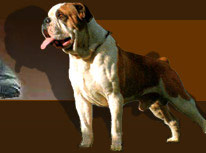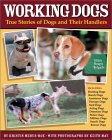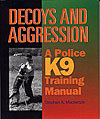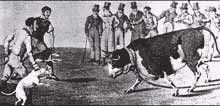Beware of recently published books about bully breeds. Some of these have directly taken their information from our website (without ever mentioning their source, of course), using terms we have coined (as some neologisms used in the Ca de Bou and Brazilian Bulldog descriptions) and conclusions we have drawn. The info they have used without giving us credit is based on OUR first-hand experience. We have personally contacted ALL foundation breeders we mention on our pages and collected additional info while living in and traveling through the countries these dogs are native to. Something those authors can not possibly claim. The irony is that they give thenselves away be mentioning the very same selection of bulldog breeds we have featured on this website (while there are at least 20 more bulldog breeds out there, some of which more famous than the ones we have selected for this website). While we have mentioned only the breeds we have personally checked and researched, it seems strange they checked and researched exactly the same list of breeds...
Our suggestion is:
Before you buy a dog breed book, check who the author is. Is their info first-hand or just a collection of bits and pieces they reproduced from the internet and previously published books. Of course, research is always based on something that has been published or written before, BUT if it is done seriously sources and references are ALWAYS mentioned. So a good hint to see if a book is worthwile is to see if the book has a reference list or bibliography (especially if the book was published after 2003 or 2004, when so many sources become easily available through the internet. Today, nobody can claim they wrote a book without consulting the internet and previous sources on the topic). If a reference list is mentioned you can be sure that the research done by the author is fair and up-to-date. Every author who is serious about his work and has done an in-depth research on a topic wants to show you the path he/she followed by mentioning his sources.
Older books (such as the three ones mentioned hereafter) may not always have a bibliography. However, unlike some of the more recent, coffee table books, the three books mentioned here are classics in their field and stem from genuine dog authors and authorities who really know their subject !
The older the book, the higher the chances the info is based on the author's first-hand experience and is not just a marketing stunt. Otherwise the books mentioned on this website are usually all reliable sources.



















